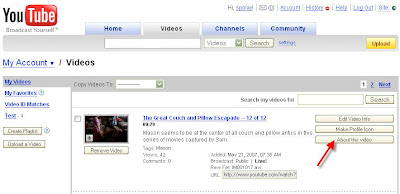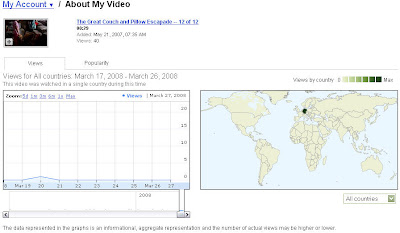Let me state for the record that if and when Boston.com expands its Your Town initiative beyond the immediate Boston area, and starts aggregating stories from our New England media groups -- Cape Cod, SouthCoast, Seacoast and Nantucket -- I will not consider it a threat and will not join Gatehouse in their suit against the New York Times Co.
(Others in the company might disagree, of course, so let's also state for the record that this point of view is mine, singularly, as we have not yet formed an official company consensus, much less a position, on this issue.)
Sure, I understand the competitive concerns on the advertising and branding front. Long-term, however, the opportunities are going to outweigh the challenges. And make no mistake: Such partnerships are tremendous opportunities. We should be seeking them far and wide, with all sorts of media, professional associations, government institutions, non-profits and more.
It's in exactly the same vein as content distribution and marketing programs we've been discussing, exploring and preparing for over the last 12 months, especially on the back end as we've prepped calendar, headline and business review widgets for placement on both partner Web sites and for everyday users to pick up and put on their blogs or other personalized platforms.
Bob Kempf, old friend, sign us up, and it has nothing to do with your Ottaway heritage. It's a simple PageRank equation.
- Boston.com's Google PageRank = 8
- Cape Cod's Google PageRank = 6
- SouthCoast's Google PageRank = 6
- Seacoast's Google PageRank = 4
- Nantucket's Google PageRank = 5
That said, one of the basic tenets of SEO is that the more links you have back to your site, the more authorative you appear to be to Google, especially when those links come from a site with a higher PageRank than yours. Such links translate to having a greater chance of being more highly visible in Google -- depending on the keywords used, of course.
So we will take Boston.com's appropriately attributed links to our stories, especially if they continue to leave the "nofollow" attribute off of the link. I will thank them for the direct traffic they drive to us. I will thank them for general opportunity on many other fronts, too.
Meanwhile, we will redouble our efforts to decrease our bounce rate and convert that traffic into more loyal customers once they arrive at our articles. We will ride that wave of links -- in combination with other SEO-related efforts -- all the way to higher visibility in Google and other search engines, which in turn will also generate more traffic and more opportunities for conversion.
But before Boston.com or anyone else blesses us with such great opportunities, we've got some more basic blocking and tackling to do. For starters, Boston.com and any other future partners are not going to rewrite our headlines for us.
The headline is the first and perhaps only chance we have at magnifying the potential of any linking opportunity, and when we continue to leave print kicker headlines in place for Web placement and aggregation, we remain dead in the water in the customer conversion battle. From an SEO point of view, the dearth of keyword-rich headlines also means none of these back links is going to be worth very much in the race for increased search engine visibility.
We need to get in the habit of adding more context and keywords to our Web headlines. To illustrate, here is a sampling from around our empire today:
- Multiple crashes reported on ice-slicked roadways (Where?)
- Amtrak trains delayed by severe weather (Where?)
- Santa sisterhood (What is this story even about?)
- A Christmas stolen now retrieved (Where?)
- Wake held for slain teenager (Where?)
- Shop around the clock (What is this story even about?)
- Police say man pointed gun at woman, then fled (Where?)
- Ice storm shelter closed as power restored (Where?)
- You were good, for goodness’ sake. (What is this story even about?)
- Route I-495 North reopened, South remains closed (Where? 495 is a long road)
- Last-minute shoppers create 'horrendous' traffic (What kinds of shoppers? Where?)
- Community Update (Which community?)
- Roads are slick; freezing rain now will continue to noon (Where?)
- Stolen ferret report leads to two arrests (Where?)
- Universities, union clash on smoking ban (Where?)
- 'A Living, Breathing Celebration' (What is this story even about? Would it surprise you that it is not about Christmas, but instead about state history?)
- 'Empire Builders' series details local history (Where?)
- Charities do surprisingly well (Where?)
- Delivering the knockout (What is this story even about? Boxing?)
- A healthy reputation (What is this story even about?)
- Official says plans greener at stadium (Where?)
The flip side, of course, is that using the town name in every headline that makes sense will create some overkill on our community pages. In fact, the redundancy will also be beneficial from a search-engine standpoint, and it will not significantly harm the user experience. If headlines on the Anywhere page all have the "Anywhere" in them, the keyword saturation of that page will help it rank highly for anyone searching for "Anywhere news" or anything else to do with Anywhere.
The alternative, though, is an outright gamble. Leaving off the place name and hoping the ambiguity will inspire the reader to click and consume some portion of the story to get the full context is tantamount to cold calling the entire phone book and hoping to hit your monthly sales number before you run out of time.
Looking beyond our core platforms, we should consider a keyword-rich, fully contextual headlines as a lead qualifiers. It's one thing to get a bunch of traffic from a punchy headline linked from Fark or Drudge, and hope to convert some small percentage of that flood into a second page view and beyond, but we all know our primary goal is to attract local audiences. The more local information that can be stuffed into a headline, the more likely it is that the person clicking is from the local audience, and we have a much greater chance of converting that consumer to engage with our local advertising and other local content.
Which approach -- cold calling from an unqualified list, or prequalifying and prioritizing your leads -- is more efficient, and more likely to lead to revenue? Well-written Web headlines are the equivalent of the latter, and are more likely to lead to audience retention, which in turn increases our online revenue prospects.
Online content and audience development is not merely about page views and unique visitors. It's about increasing our share of the local online audience to a significant enough scale that our advertising solutions will generate enough meaningful results for local business that invest their marketing trust and budgets with us. If we can't capture a bigger piece of the local audience pie, and don't retain users once we've captured them, we can't very well expect to retain advertisers.
It all starts with the headlines.





